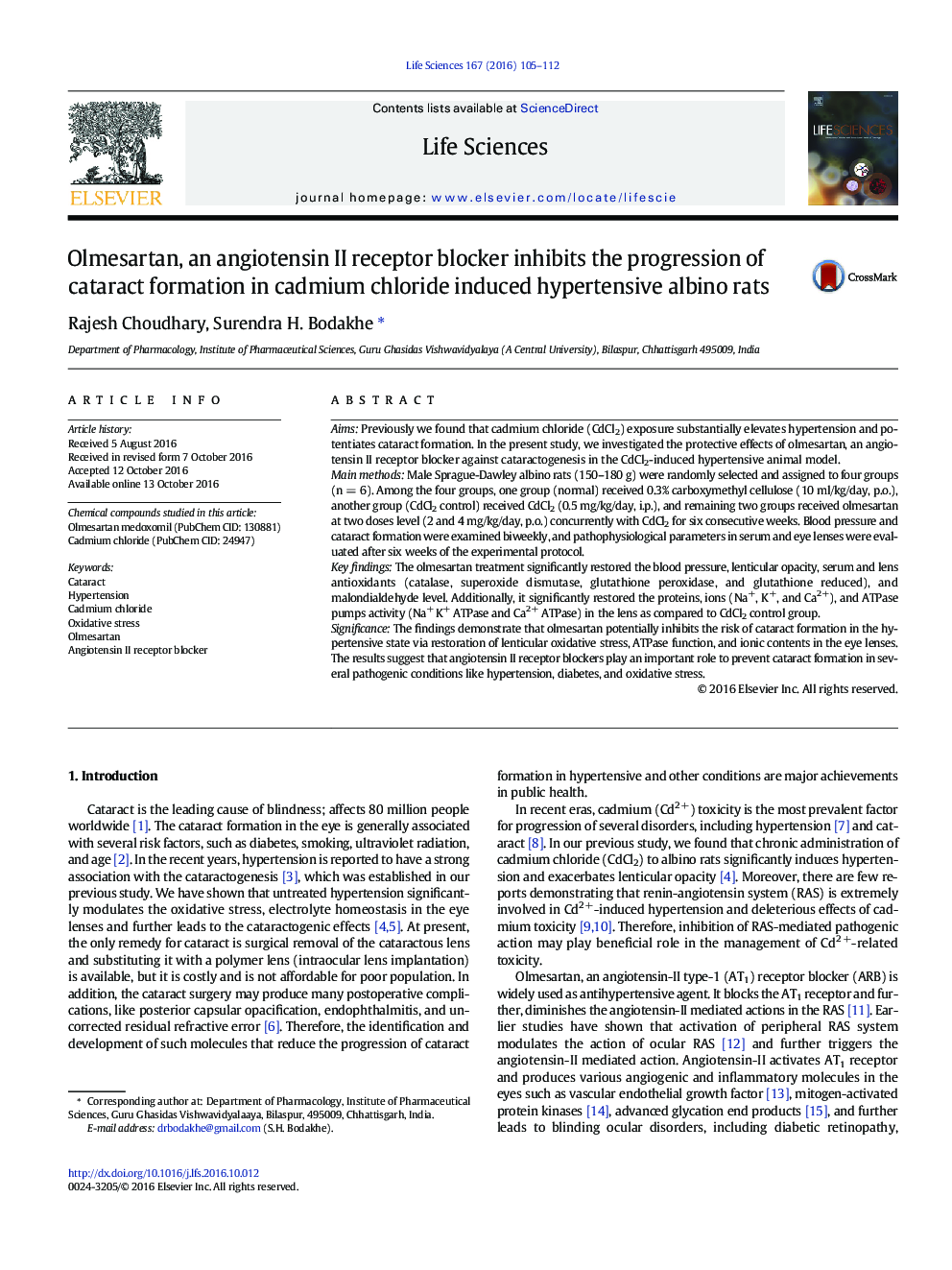| Article ID | Journal | Published Year | Pages | File Type |
|---|---|---|---|---|
| 5557118 | Life Sciences | 2016 | 8 Pages |
AimsPreviously we found that cadmium chloride (CdCl2) exposure substantially elevates hypertension and potentiates cataract formation. In the present study, we investigated the protective effects of olmesartan, an angiotensin II receptor blocker against cataractogenesis in the CdCl2-induced hypertensive animal model.Main methodsMale Sprague-Dawley albino rats (150-180 g) were randomly selected and assigned to four groups (n = 6). Among the four groups, one group (normal) received 0.3% carboxymethyl cellulose (10 ml/kg/day, p.o.), another group (CdCl2 control) received CdCl2 (0.5 mg/kg/day, i.p.), and remaining two groups received olmesartan at two doses level (2 and 4 mg/kg/day, p.o.) concurrently with CdCl2 for six consecutive weeks. Blood pressure and cataract formation were examined biweekly, and pathophysiological parameters in serum and eye lenses were evaluated after six weeks of the experimental protocol.Key findingsThe olmesartan treatment significantly restored the blood pressure, lenticular opacity, serum and lens antioxidants (catalase, superoxide dismutase, glutathione peroxidase, and glutathione reduced), and malondialdehyde level. Additionally, it significantly restored the proteins, ions (Na+, K+, and Ca2 +), and ATPase pumps activity (Na+ K+ ATPase and Ca2 + ATPase) in the lens as compared to CdCl2 control group.SignificanceThe findings demonstrate that olmesartan potentially inhibits the risk of cataract formation in the hypertensive state via restoration of lenticular oxidative stress, ATPase function, and ionic contents in the eye lenses. The results suggest that angiotensin II receptor blockers play an important role to prevent cataract formation in several pathogenic conditions like hypertension, diabetes, and oxidative stress.
